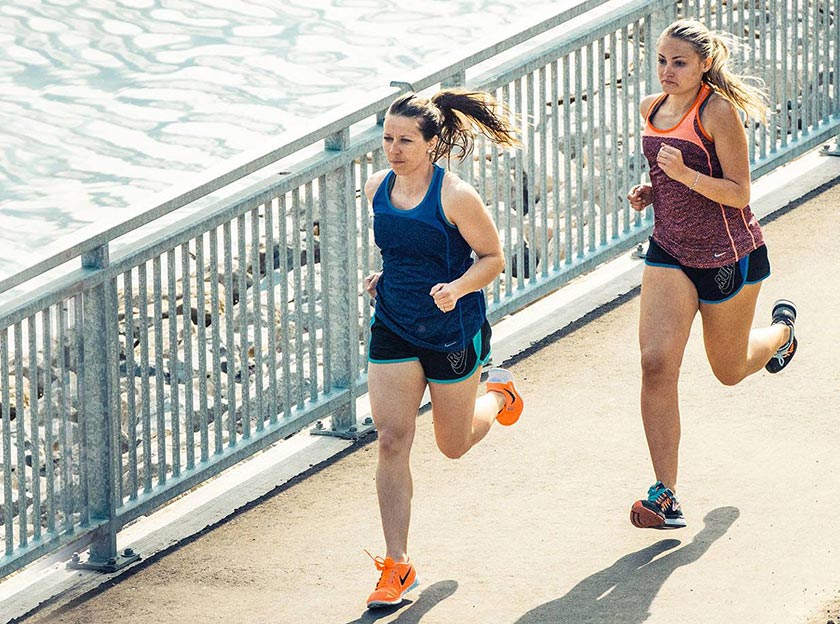Heat takes its toll on all runners as the body works extra hard to deal with excess heat produced while running. This impacts on performance, and potentially leads to dehydration and even heat exhaustion.
With this in mind, Sportsshoes.com’s Matthew Pierson shares his advice for anyone wanting to run in the heatwave, and do so safely.
RUN TO EFFORT NOT PACE
When it’s hot and your body needs to cool down, your body sends blood to the skin capillaries to aid cooling.
Because of this, blood volume drops and the heart has to work harder to sustain workload, meaning relative intensity and effort level increase and you’ll hit your max a lot quicker. When it’s hot, forget the average pace, adjust for heat and humidity, and concentrate on feel and effort during your session.
BE AWARE OF HUMIDITY
When it’s hot and humid it becomes harder for sweat to evaporate because the air is already saturated with water.
This means that although you may be sweating, there is little cooling effect. Therefore, it’s important to adjust the intensity accordingly.
STAY HYDRATED
You’ve probably heard this 1000 times but it really is that important.
Staying hydrated pre and post run is crucial to allow evaporative cooling. On average you’ll lose one litre of fluid per hour of exercise, and extreme heat and humidity can increase that to up to 3 litres.
Take a hydration pack or bottle belt with you, or stash water bottles along your planned route.
ONLY WEAR BREATHABLE FABRICS
The body’s key way of cooling is through sweat evaporation. And sweat must evaporate off the skin to have a cooling effect.
Technical fabrics aid cooling by wicking sweat off the skin and into the fabric fibre. This aids evaporation and assists the body’s cooling mechanism.
Wear loose, light clothing made from technical fabrics and avoid cotton which holds on to sweat and hinders evaporation.
RUN AT THE COOLEST TIME OF DAY
It’s simple but it makes sense. Avoid running in the middle of the day between 12 and 3pm when the sun is at its strongest.
A run in the cool of a summer’s morning or during a summer sunset makes all the difference to struggling through midday heat.
GET VENTILATED
Keeping key heat areas ventilated also assists the cooling process. Look for mesh panels at the knee and under arms.
Many running shoes also now feature integrated ventilation too.
ENSURE YOU HAVE THE CORRECT RUNNING SHOES
When it’s hot and humid, we tire quicker. When we tire our stride pattern can get a little bit sloppy and our bodies will become dehydrated quicker than at a cooler temperature.
This makes it even more important that we’re wearing the correct shoes to support our pronation – the natural side-to-side movement of your foot as you walk or run.
Unsupported pronation can result in injuries that include back issues, knee pain, or Plantar Fasciitis, making it important to get right, especially in the hot weather.
If you don’t know your pronation type, you can find out by following this easy guide.
